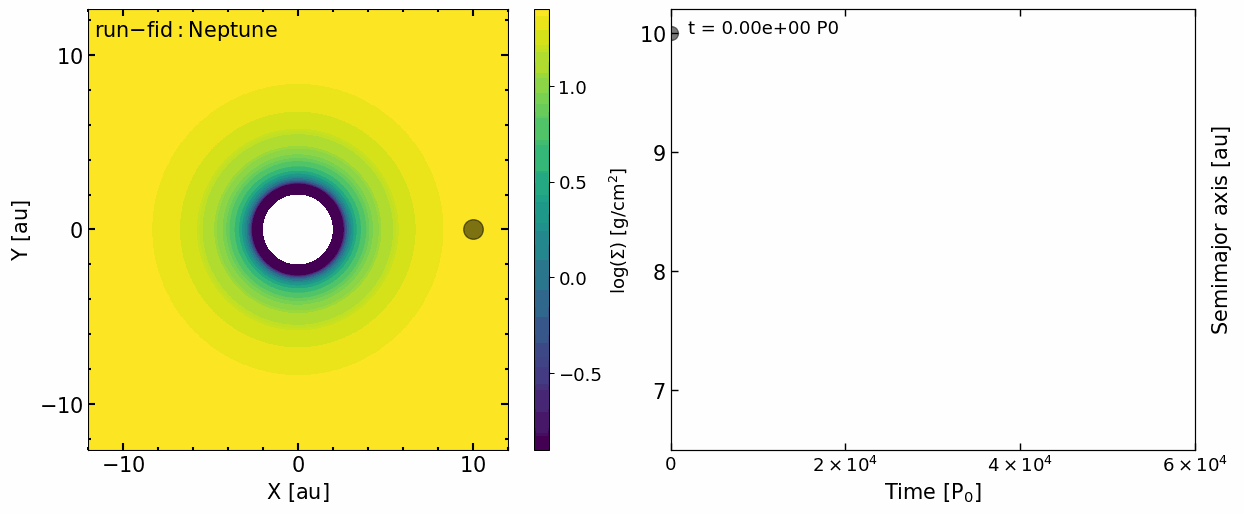
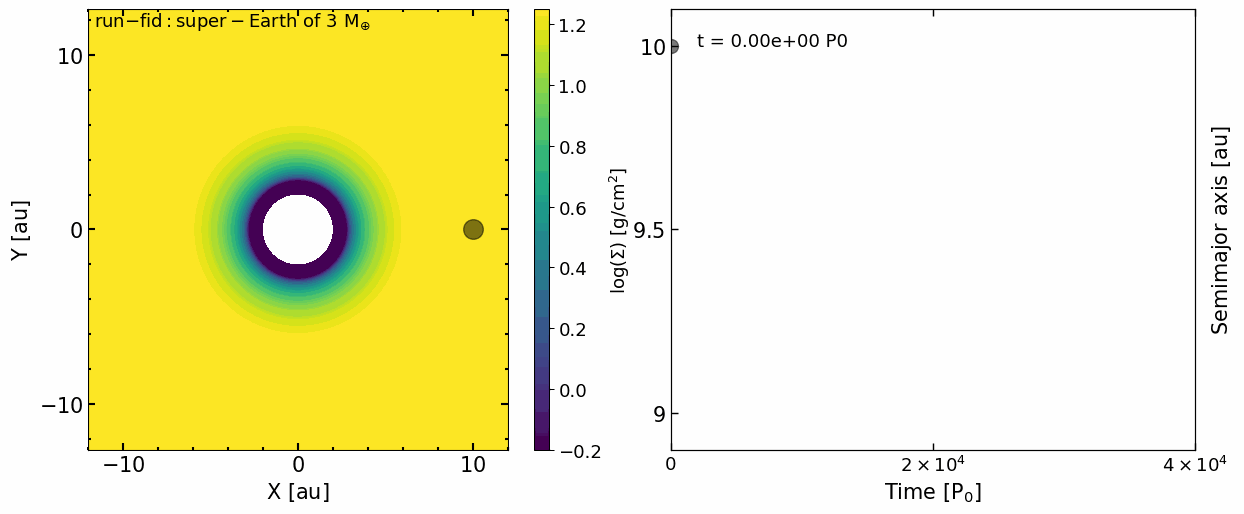
Hydrodynamical Simulations of Planet Rebound Migration in Photo-evaporating Disks
Liu et al. 2025, A&A [ADS] [arxiv]
This work presents the first 2D hydrodynamical simulations that confirm the existence and viability of rebound outward migration during the inside-out clearing in protoplanetary disks. The combined effects of turbulent viscous accretion and stellar X-ray photo-evaporation give rise to the formation of a cavity in the central few astronomical units in disks. Once the cavity is formed, the outer disk experiences rapid mass loss and the cavity expands inside out. We have conducted 2D hydrodynamical simulations of planet-disk interaction for various planet masses and disk properties. Our simulations demonstrate that planets up to about Neptune masses experience a strong positive corotation torque along the cavity edge that leads to sustained outward migration -- a phenomenon previously termed rebound migration.
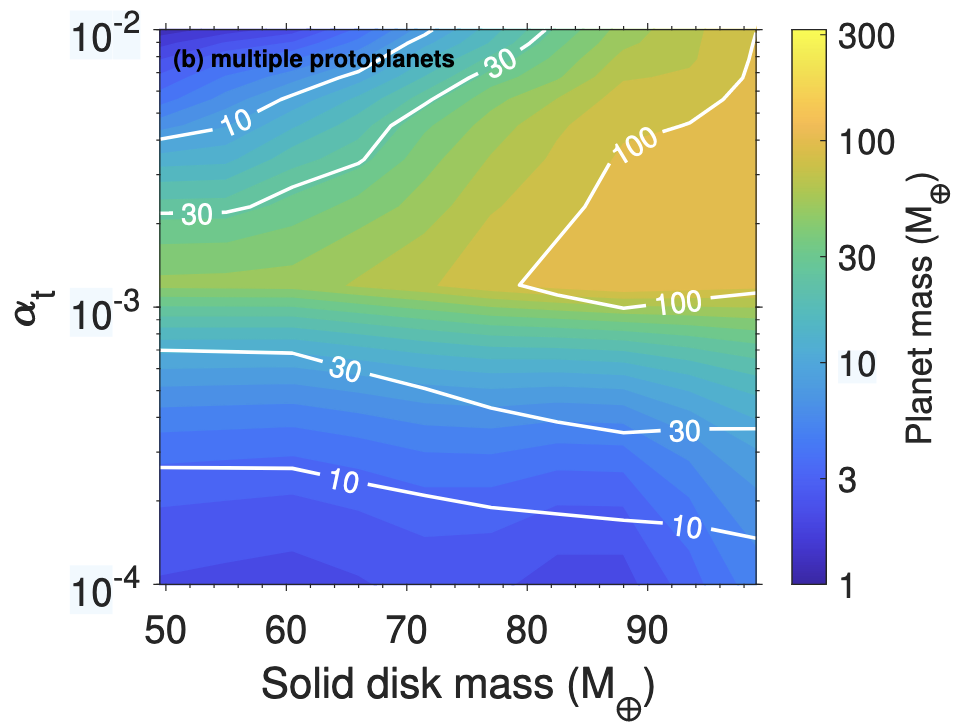
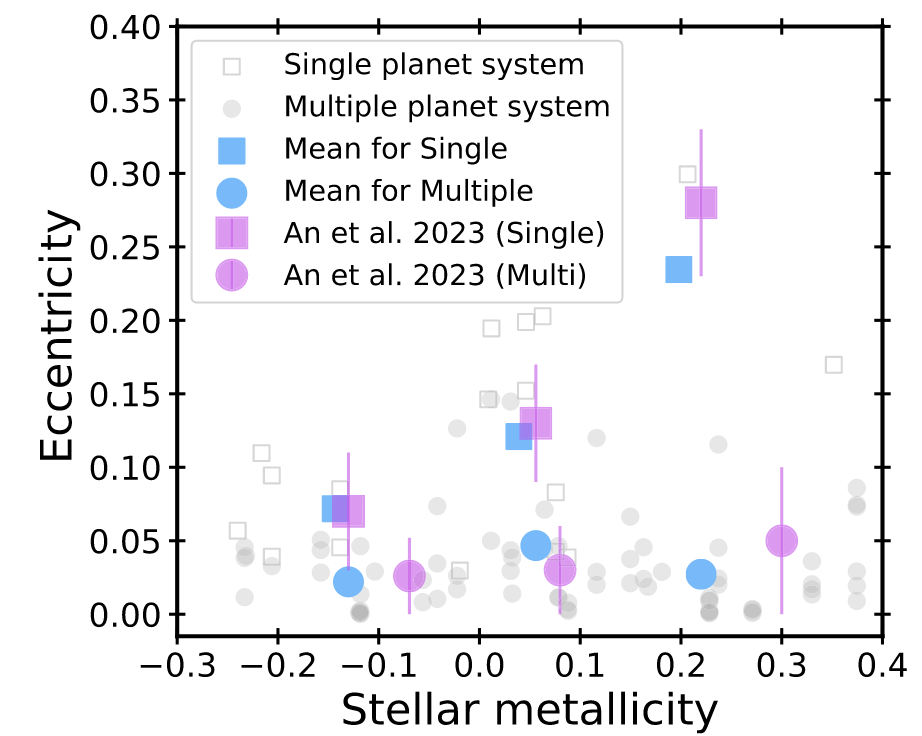
How planet forms in different stellar environment?
Pan, Liu et al. 2025, ApJ [ADS] [arxiv]
Pan, Liu et al. 2024, A&A [ADS] [arxiv]
We employ a pebble-accretion-based planet population synthesis model to explore the correlation between planetary properties and stellar mass/metallicity. We first explore under which conditions the giant planets may form around very low-mas stars (Mstar<0.2 Msun). Our simulation results also reproduce main aspects of exoplanetary observations: 1) the occurrence rate of super-Earths (ηSE) increases with stellar mass among lower-mass dwarfs, peaks at early M dwarfs, and declines toward higher-mass GK stars; 2) super-Earths grow ubiquitously around stars with various metallicities, exhibiting a flat or weak ηSE dependence on stellar metallicity; 3) giant planets in contrast form more frequently around stars with higher mass/metallicity; 4) the eccentricities and inclinations of single-transit systems increase with stellar metallicity, while these dependencies in multi-planet systems remains relatively weak.

Natural separation of two primordial planetary reservoirs in an expanding solar protoplanetary disk
Liu, Johansen et al. 2022, Sicence Advances [ADS] [arxiv]
Meteorites display an isotopic composition dichotomy between noncarbonaceous and carbonaceous groups, indicating that planetesimal formation in the solar protoplanetary disk occurred in two distinct reservoirs. In constrast to the tranditional view of Jupiter blocking these two reserviors, we alternatively show that the arrival of the CC pebbles in the inner disk is delayed for several million years by the viscous expansion of the protoplanetary disk. An expanding young solar gaseous disk model better explains the formation and isotopic composition of meteorites and planets.
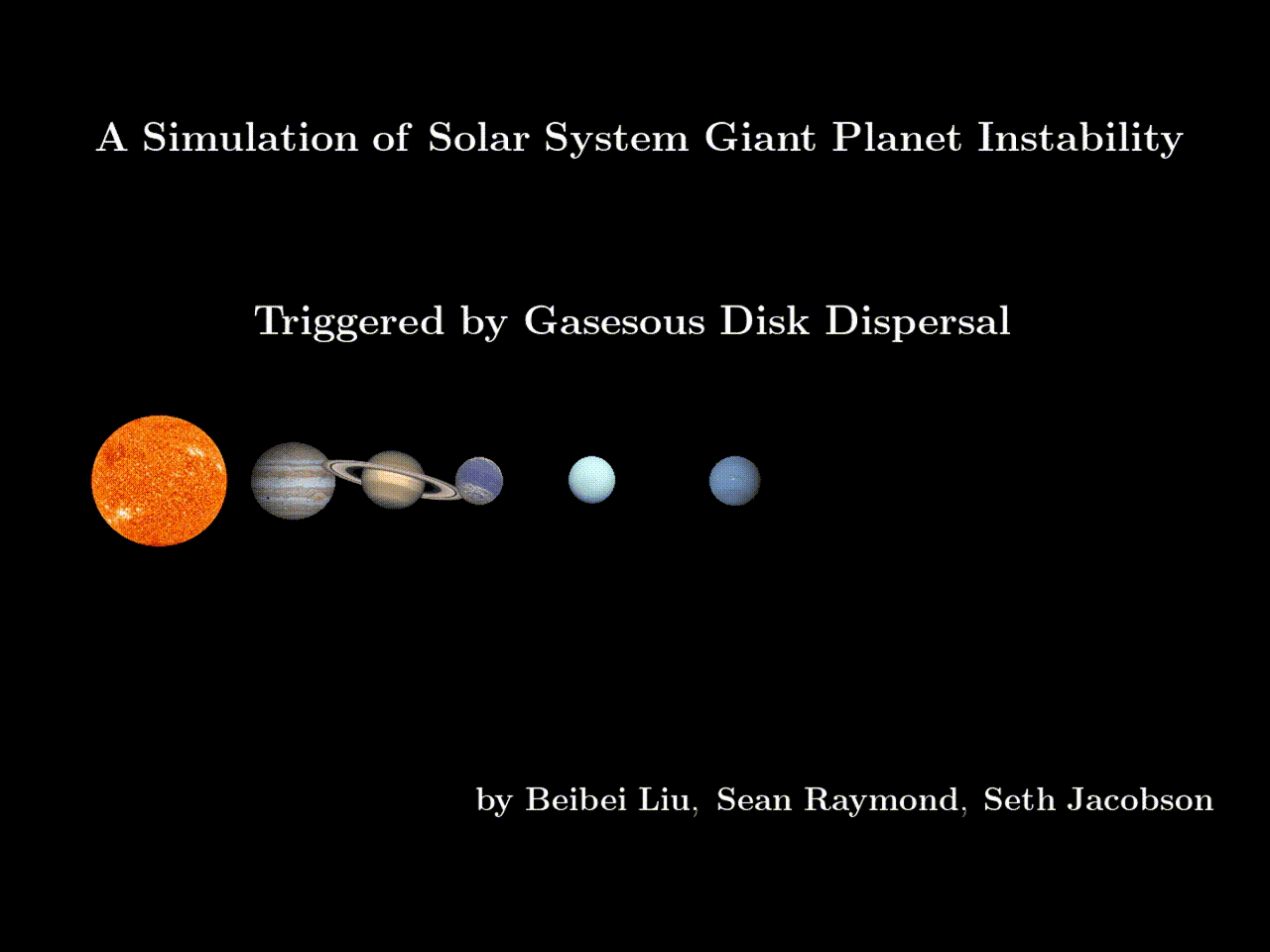
Early Solar System instability triggered by dispersal of the gaseous disk
Liu, Raymond & Jacobson 2022, Nature [ADS] [arxiv]
We perform N-body simulations to show that the Solar System giant planets' instability can be triggered by the dispersal of the natal protoplanetary gaseous disk. As the stellar high-energy photo evaporates the disk from the inside out, the disk inner edge swept successively across and dynamically perturbed each planet's orbit. The associated orbital shift caused a dynamical compression of the exterior part of the system, ultimately triggering instability.

We summarize the cutting-edge states of the exoplanet and disk observations and present a comprehensive panoptic view of modern core accretion planet formation scenarios, including dust growth and radial drift, planetesimal formation by the streaming instability, core growth by planetesimal accretion and pebble accretion.

Pebble-driven planet formation around very low-mass stars and brown dwarfs
Liu, Lambrechts, Johansen, Ilaria & Henning 2020, A&A [ADS] [arxiv]
We conduct a planet population synthesis study to investigate the formation of planets around very low-mass stars and brown dwarfs in the (sub)stellar mass range between 0.01 M⊙ and 0.1 M⊙. We start with protoplanets formed by the streaming instability and trace their subsequent growth and migration. We find the final masses of planets scales linearly with their central hosts, maximumly reaching the pebble isolation mass. The giant planets cannot form in such low-mass (sub)stellar host systems.

Super-Earth masses sculpted by pebble isolation around stars of different masses
Liu, Lambrechts, Johansen, Liu 2019, A&A [ADS] [arxiv]
We study the formation and evolution of protoplanets around stars in the stellar mass range of 0.08 M⊙-1 M⊙. By Monte Carlo sampling of the initial conditions, the growth and migration of a large number of individual protoplanets were simulated in a population synthesis manner. The forming planets are compared with the observed exoplanets in terms of mass, semimajor axis, metallicity, and water content.
Our model shows that the characteristic mass of super-Earth is set by the pebble isolation mass. Super-Earth masses increase linearly with the mass of its stellar host, which corresponds to one Earth mass around a late M-dwarf star and 20 Earth masses around a solar-mass star. In addition, the low-mass planets, up to 20 M⊕, can form around stars with a wide range of metallicities, while massive gas giant planets are preferred to grow around metal-rich stars. Our model succeeds in quantitatively reproducing several important observed properties of exoplanets and correlations with their stellar hosts.